Do you have a question about the Panasonic Viera TX-32LXD700 and is the answer not in the manual?
Instructions for discarding products in regions outside the EU.
Provides contact details for product support and inquiries.
Section to record model and serial numbers for warranty and theft purposes.
Covers mains plug safety, fuse replacement, and electrical hazard avoidance.
Addresses exposure to heat, moisture, ventilation, and stable placement.
Includes warnings about SD card handling and transporting the unit.
Details on panel/cabinet cleaning, mains plug maintenance, and auto standby function.
Lists the items included with the TV, like remote and batteries.
Step-by-step guide on how to insert batteries into the remote control.
Instructions on how to use the included clamper for cable management.
Steps for safely detaching the TV stand from the unit.
Information about optional accessories like wall-hanging brackets.
Instructions for cleaning the display panel surface carefully.
Guidelines for cleaning the TV cabinet to prevent damage.
Instructions for cleaning the mains plug to prevent electrical hazards.
Includes auto standby function and equipment interference advice.
Location of the signal receiver for the remote control.
Indicates the status of the TV's power (standby or on).
The primary on/off switch for the television.
Buttons for adjusting settings and changing input sources.
Covers buttons like ASPECT, VIERA Link, GUIDE, OPTION, MENU, EXIT.
Instructions for connecting an aerial to the TV.
Guide for connecting DVD recorders, VCRs, and satellite receivers.
Important notes regarding SCART, RF, RGB, S-Video, and Video connections.
Initial step to power on the TV and start the auto setup process.
Guide for entering the owner ID and PIN number during initial setup.
Instructions on selecting a preferred viewing mode for picture quality.
Explanation of how to navigate menus and use on-screen display controls.
Steps to turn on the TV and select DVB or Analogue broadcast modes.
Methods for tuning into specific TV channels.
How to change the picture's aspect ratio for optimal viewing.
Instructions for viewing multiple video sources simultaneously.
How to display subtitles and view current programme status information.
How to switch between landscape and portrait views of the TV Guide.
Options for altering the TV Guide display layout and selecting channels.
Accessing detailed information about broadcast programmes.
Setting up timer recordings for programmes via the TV Guide.
Steps to power on the TV and prepare for external device viewing.
Choosing the correct input source from the displayed list.
Configuring the remote to control external Panasonic VCR or DVD equipment.
How to activate the teletext function on the TV.
General guidance on navigating teletext pages using the remote.
Specific instructions for using teletext services in Analogue mode.
How to reveal hidden text and manage teletext pages.
Instructions on how to insert an SD card and activate Photo View Mode.
How to select individual photos and view them on the screen.
Settings and controls for viewing images as a slideshow.
Important warnings regarding safe handling and usage of SD cards.
How to program timer recordings for DVB broadcasts via the menu.
Steps and options for configuring timer recording parameters.
Instructions for immediate recording of the current program.
Requirements for connecting and using Q-Link with VCR/DVD recorders.
How to download analogue channel information to connected equipment.
How Q-Link enables easy playback and automatic power-on.
Introduction to HDMI for high-definition digital audio and video connection.
Overview of control functions enabled by HDMI and VIERA Link.
Features enabled by HDAVI Control, like easy playback and power linking.
Steps for enabling and connecting equipment for VIERA Link functionality.
How to operate connected devices using the TV remote via VIERA Link.
Explains operation modes based on HDAVI Control version and equipment type.
Table showing recommended connections for various equipment types.
Diagrams for connecting HDMI devices and PCs to the TV.
Recommended connections for VIERA Link and Home Cinema setups.
Explains aspect ratio options and the automatic detection feature.
Table detailing aspect ratio support for various input signals.
Instructions for downloading and installing software updates for DVB functionality.
Instructions for viewing multiple video sources simultaneously on the TV screen.
Further details on VIERA Link features and compatibility.
Accessing Pay-TV services via the Common Interface Module.
Guide for downloading and updating the TV's system software.
How to enable or disable automatic software updates while in standby.
Choosing between DVB and Analogue modes for channel management.
Steps to access the setup menu for channel management functions.
Using DVB Profile Edit to organize and manage favorite channels.
Utilizing DVB Service List to hide specific broadcast services.
Locking specific channels using a PIN number to restrict viewing access.
Choosing between DVB and Analogue modes for tuning.
Accessing the setup menu for tuning operations.
Functions for editing analogue channel positions and manually tuning them.
Manually tuning DVB channels and adding new services.
Automatically searching and storing all available TV channels.
Accessing the menu to initiate a settings reset.
Choosing the option to reset all TV settings to factory defaults.
Confirming the reset operation and initializing the TV.
Accessing the menu to input owner identification details.
Entering the security PIN and personal details for owner identification.
Instructions for modifying the existing owner ID PIN.
Accessing the menu for input label management.
Labeling or skipping specific input terminals for easier selection.
How to assign custom names to input terminals.
Selecting the PC input source for display.
Adjusting picture settings and resolution for PC input.
Adjusting the PC image position on the TV screen.
Explains aspect ratio options and the automatic detection feature.
Table detailing aspect ratio support for various input signals.
Instructions for downloading and installing software updates for DVB functionality.
Instructions for viewing multiple video sources simultaneously on the TV screen.
Further details on VIERA Link features and compatibility.
Accessing Pay-TV services via the Common Interface Module.
Guide for downloading and updating the TV's system software.
How to enable or disable automatic software updates while in standby.
Choosing between DVB and Analogue modes for channel management.
Steps to access the setup menu for channel management functions.
Using DVB Profile Edit to organize and manage favorite channels.
Utilizing DVB Service List to hide specific broadcast services.
Locking specific channels using a PIN number to restrict viewing access.
Choosing between DVB and Analogue modes for tuning.
Accessing the setup menu for tuning operations.
Functions for editing analogue channel positions and manually tuning them.
Manually tuning DVB channels and adding new services.
Automatically searching and storing all available TV channels.
Accessing the menu to initiate a settings reset.
Choosing the option to reset all TV settings to factory defaults.
Confirming the reset operation and initializing the TV.
Accessing the menu to input owner identification details.
Entering the security PIN and personal details for owner identification.
Instructions for modifying the existing owner ID PIN.
Accessing the menu for input label management.
Labeling or skipping specific input terminals for easier selection.
How to assign custom names to input terminals.
Selecting the PC input source for display.
Adjusting picture settings and resolution for PC input.
Adjusting the PC image position on the TV screen.
Troubleshooting common screen display problems and their solutions.
Solutions for problems related to sound output and quality.
Resolving interference, frozen images, and HDMI connection problems.
Addressing problems with the TV entering standby mode or the remote control not working.
Explanations for messages related to tuning, data erasure, and PIN entry.
Meanings for messages about signal quality, feature availability, and channel status.
Interpretations of messages related to software updates and timer programming.
Explanations for messages concerning recording, equipment status, and timers.
Technical details on power consumption, display size, resolution, and audio output.
Details on available terminals and specifications for PC signal compatibility.
Information about the DVB trademark and listing of other registered logos.
An alphabetical guide to topics covered in the manual for quick reference.
Instructions for discarding products in regions outside the EU.
Provides contact details for product support and inquiries.
Section to record model and serial numbers for warranty and theft purposes.
Covers mains plug safety, fuse replacement, and electrical hazard avoidance.
Addresses exposure to heat, moisture, ventilation, and stable placement.
Includes warnings about SD card handling and transporting the unit.
Details on panel/cabinet cleaning, mains plug maintenance, and auto standby function.
Lists the items included with the TV, like remote and batteries.
Step-by-step guide on how to insert batteries into the remote control.
Instructions on how to use the included clamper for cable management.
Steps for safely detaching the TV stand from the unit.
Information about optional accessories like wall-hanging brackets.
Instructions for cleaning the display panel surface carefully.
Guidelines for cleaning the TV cabinet to prevent damage.
Instructions for cleaning the mains plug to prevent electrical hazards.
Includes auto standby function and equipment interference advice.
Location of the signal receiver for the remote control.
Indicates the status of the TV's power (standby or on).
The primary on/off switch for the television.
Buttons for adjusting settings and changing input sources.
Covers buttons like ASPECT, VIERA Link, GUIDE, OPTION, MENU, EXIT.
Instructions for connecting an aerial to the TV.
Guide for connecting DVD recorders, VCRs, and satellite receivers.
Important notes regarding SCART, RF, RGB, S-Video, and Video connections.
Initial step to power on the TV and start the auto setup process.
Guide for entering the owner ID and PIN number during initial setup.
Instructions on selecting a preferred viewing mode for picture quality.
Explanation of how to navigate menus and use on-screen display controls.
Steps to turn on the TV and select DVB or Analogue broadcast modes.
Methods for tuning into specific TV channels.
How to change the picture's aspect ratio for optimal viewing.
Instructions for viewing multiple video sources simultaneously.
How to display subtitles and view current programme status information.
How to switch between landscape and portrait views of the TV Guide.
Options for altering the TV Guide display layout and selecting channels.
Accessing detailed information about broadcast programmes.
Setting up timer recordings for programmes via the TV Guide.
Steps to power on the TV and prepare for external device viewing.
Choosing the correct input source from the displayed list.
Configuring the remote to control external Panasonic VCR or DVD equipment.
How to activate the teletext function on the TV.
General guidance on navigating teletext pages using the remote.
Specific instructions for using teletext services in Analogue mode.
How to reveal hidden text and manage teletext pages.
Instructions on how to insert an SD card and activate Photo View Mode.
How to select individual photos and view them on the screen.
Settings and controls for viewing images as a slideshow.
Important warnings regarding safe handling and usage of SD cards.
How to program timer recordings for DVB broadcasts via the menu.
Steps and options for configuring timer recording parameters.
Instructions for immediate recording of the current program.
Requirements for connecting and using Q-Link with VCR/DVD recorders.
How to download analogue channel information to connected equipment.
How Q-Link enables easy playback and automatic power-on.
Introduction to HDMI for high-definition digital audio and video connection.
Overview of control functions enabled by HDMI and VIERA Link.
Features enabled by HDAVI Control, like easy playback and power linking.
Steps for enabling and connecting equipment for VIERA Link functionality.
How to operate connected devices using the TV remote via VIERA Link.
Explains operation modes based on HDAVI Control version and equipment type.
Table showing recommended connections for various equipment types.
Diagrams for connecting HDMI devices and PCs to the TV.
Recommended connections for VIERA Link and Home Cinema setups.
Explains aspect ratio options and the automatic detection feature.
Table detailing aspect ratio support for various input signals.
Instructions for downloading and installing software updates for DVB functionality.
Instructions for viewing multiple video sources simultaneously on the TV screen.
Further details on VIERA Link features and compatibility.
Accessing Pay-TV services via the Common Interface Module.
Guide for downloading and updating the TV's system software.
How to enable or disable automatic software updates while in standby.
Choosing between DVB and Analogue modes for channel management.
Steps to access the setup menu for channel management functions.
Using DVB Profile Edit to organize and manage favorite channels.
Utilizing DVB Service List to hide specific broadcast services.
Locking specific channels using a PIN number to restrict viewing access.
Choosing between DVB and Analogue modes for tuning.
Accessing the setup menu for tuning operations.
Functions for editing analogue channel positions and manually tuning them.
Manually tuning DVB channels and adding new services.
Automatically searching and storing all available TV channels.
Accessing the menu to initiate a settings reset.
Choosing the option to reset all TV settings to factory defaults.
Confirming the reset operation and initializing the TV.
Accessing the menu to input owner identification details.
Entering the security PIN and personal details for owner identification.
Instructions for modifying the existing owner ID PIN.
Accessing the menu for input label management.
Labeling or skipping specific input terminals for easier selection.
How to assign custom names to input terminals.
Selecting the PC input source for display.
Adjusting picture settings and resolution for PC input.
Adjusting the PC image position on the TV screen.
Explains aspect ratio options and the automatic detection feature.
Table detailing aspect ratio support for various input signals.
Instructions for downloading and installing software updates for DVB functionality.
Instructions for viewing multiple video sources simultaneously on the TV screen.
Further details on VIERA Link features and compatibility.
Accessing Pay-TV services via the Common Interface Module.
Guide for downloading and updating the TV's system software.
How to enable or disable automatic software updates while in standby.
Choosing between DVB and Analogue modes for channel management.
Steps to access the setup menu for channel management functions.
Using DVB Profile Edit to organize and manage favorite channels.
Utilizing DVB Service List to hide specific broadcast services.
Locking specific channels using a PIN number to restrict viewing access.
Choosing between DVB and Analogue modes for tuning.
Accessing the setup menu for tuning operations.
Functions for editing analogue channel positions and manually tuning them.
Manually tuning DVB channels and adding new services.
Automatically searching and storing all available TV channels.
Accessing the menu to initiate a settings reset.
Choosing the option to reset all TV settings to factory defaults.
Confirming the reset operation and initializing the TV.
Accessing the menu to input owner identification details.
Entering the security PIN and personal details for owner identification.
Instructions for modifying the existing owner ID PIN.
Accessing the menu for input label management.
Labeling or skipping specific input terminals for easier selection.
How to assign custom names to input terminals.
Selecting the PC input source for display.
Adjusting picture settings and resolution for PC input.
Adjusting the PC image position on the TV screen.
Troubleshooting common screen display problems and their solutions.
Solutions for problems related to sound output and quality.
Resolving interference, frozen images, and HDMI connection problems.
Addressing problems with the TV entering standby mode or the remote control not working.
Explanations for messages related to tuning, data erasure, and PIN entry.
Meanings for messages about signal quality, feature availability, and channel status.
Interpretations of messages related to software updates and timer programming.
Explanations for messages concerning recording, equipment status, and timers.
Technical details on power consumption, display size, resolution, and audio output.
Details on available terminals and specifications for PC signal compatibility.
Information about the DVB trademark and listing of other registered logos.
An alphabetical guide to topics covered in the manual for quick reference.
| Screen Size | 32 inches |
|---|---|
| Resolution | 1366 x 768 |
| Display Type | LCD |
| HDMI Ports | 3 |
| USB Ports | 1 |
| Weight | 17.5 kg |
| Aspect Ratio | 16:9 |
| Brightness | 500 cd/m² |
| Response Time | 8 ms |
| Viewing Angle | 178° |
| VGA Port | Yes |
| Scart Sockets | 2 |
| Component Video Input | 1 |
| Composite Video Input | 1 |
| Headphone Jack | Yes |
| Built-in Speakers | Yes |
| Speaker Output | 20W |
| Standby Power Consumption | 0.3W |
| HD Format | HD Ready |
| Tuner | Analog and Digital |



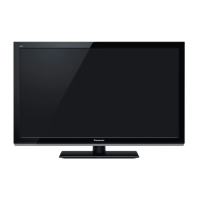
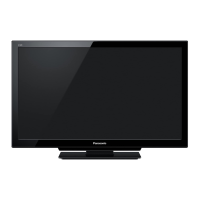
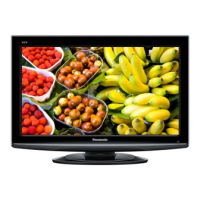

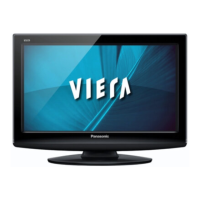

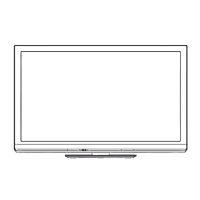
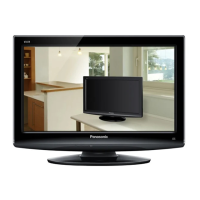
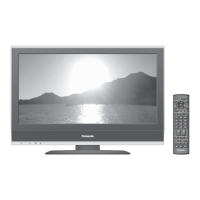
